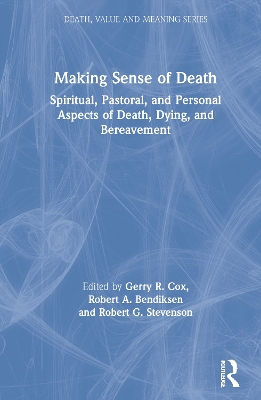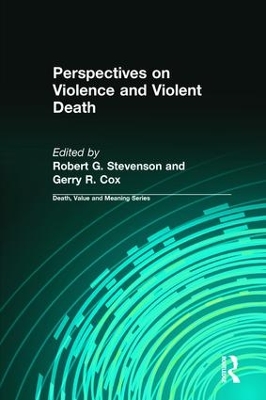Death, Value and Meaning
3 total works
Making Sense of Death
by Gerry R Cox, Robert A Bendiksen, and Robert G Stevenson
The editors of "Making Sense of Death: Spiritual, Pastoral, and Personal Aspects of Death, Dying and Bereavement" provide stimulating discussions as they ponder the meaning of life and death.This anthology explores the process of meaning-making in the face of death and the roles of religion and spirituality at times of loss; the profound and devastating experience of loss in the death of a spouse or a child; a psychological model of spirituality; the dimensions of spirituality; humor in client-caregiver relationships; the worldview of modernity in contrast to postmodern assumptions; the Buddhist perspective of death, dying, and pastoral care; meaning-making in the virtual reality of cyberspace; individualism and death; and the historical context of Native Americans, the concept of disenfranchised grief, and its detailed application to the Native American experience.It also explores: a qualitative survey on the impact of the shooting deaths of students in Colorado; a team approach with physicians, nursing, social services, and pastoral care; a study of health care professionals, comparing clergy with other health professionals; marginality in spiritual and pastoral care for the dying; a qualitative research study of registered nurses in the northeast United States; and loss and growth in the seasons of life.
Perspectives on Violence and Violent Death
by Robert G Stevenson and Gerry R Cox
This book examines violence. It looks at the nature and types of violence, the causes of violence, and the emotional wake left by violent episodes. In the twentieth century, the world experienced two world wars and countless other wars. Many millions died violent deaths from murder, death squads, purges, riots, revolutions, ethnic cleansing, rape, robbery, domestic violence, suicide, gang violence, terrorist acts, genocide, and in many other ways. As we entered the twenty-first century, we experienced 9/11, the Red Lake School deaths, suicide bombers, and more mass death brought about by the actions of governments, revolutionaries, terrorists, and still more wars. The need to better understand violence, both lethal and non-lethal, to become aware of the many forms of violence, and to learn how to survive in the aftermath of violent death are the focus of "Perspectives on Violence and Violent Death."


